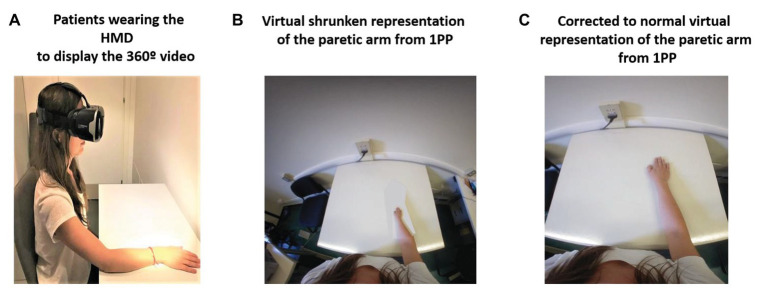Figure 1.
360° video protocol for managing body distortions in patients with stroke. Phase 1: (A) Patients wearing the head-mounted display (HMD) displaying the 360° video. (B) Virtual shrunken representation of the affected arm: Patients will observe the virtual body that will be colocated with their real body and will represent the patient’s described distorted representation of the upper limb from a first person-perspective (1PP; e.g., a shrunken upper limb). Phase 2: (C) First-person perspective observation of the progressive transformation of the affected upper limb from the distorted representation to a normal one through an edited 360° video viewed through the HMD.

